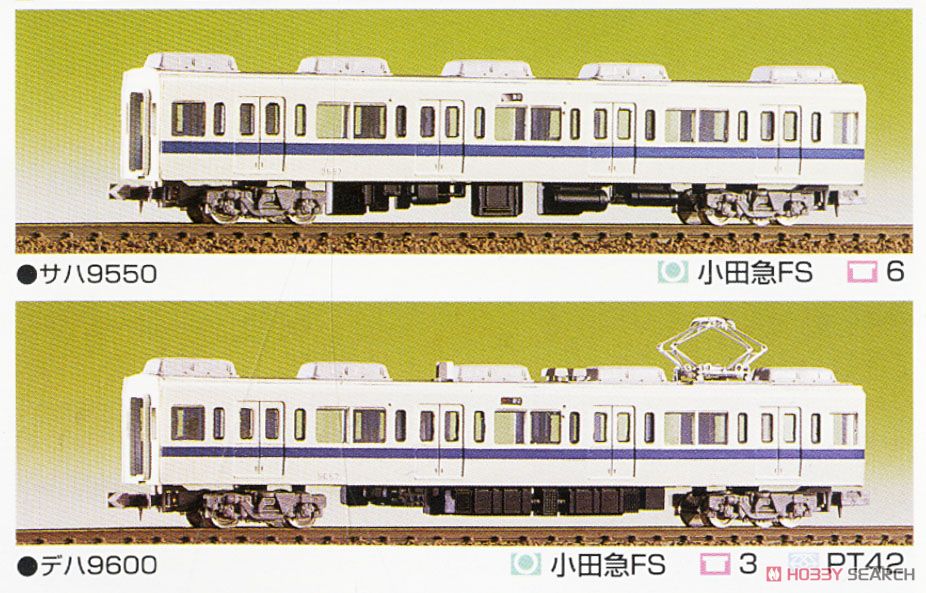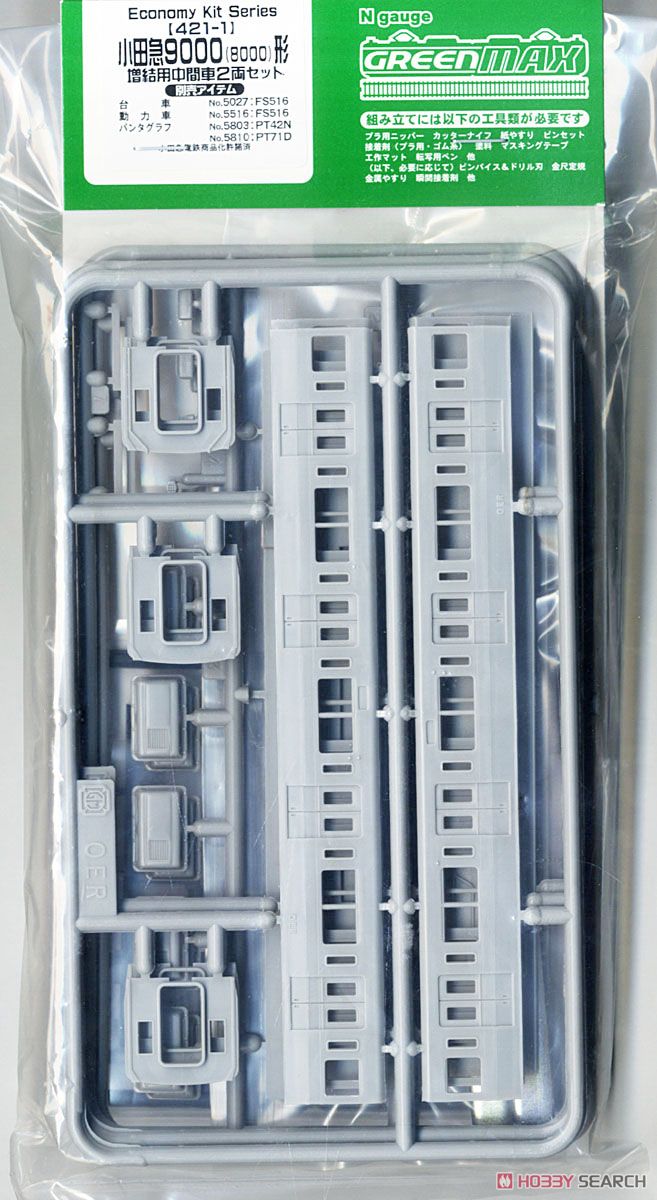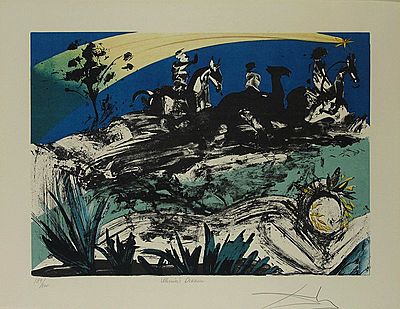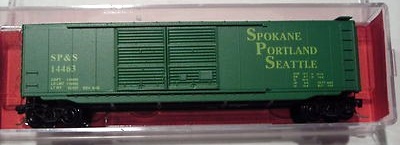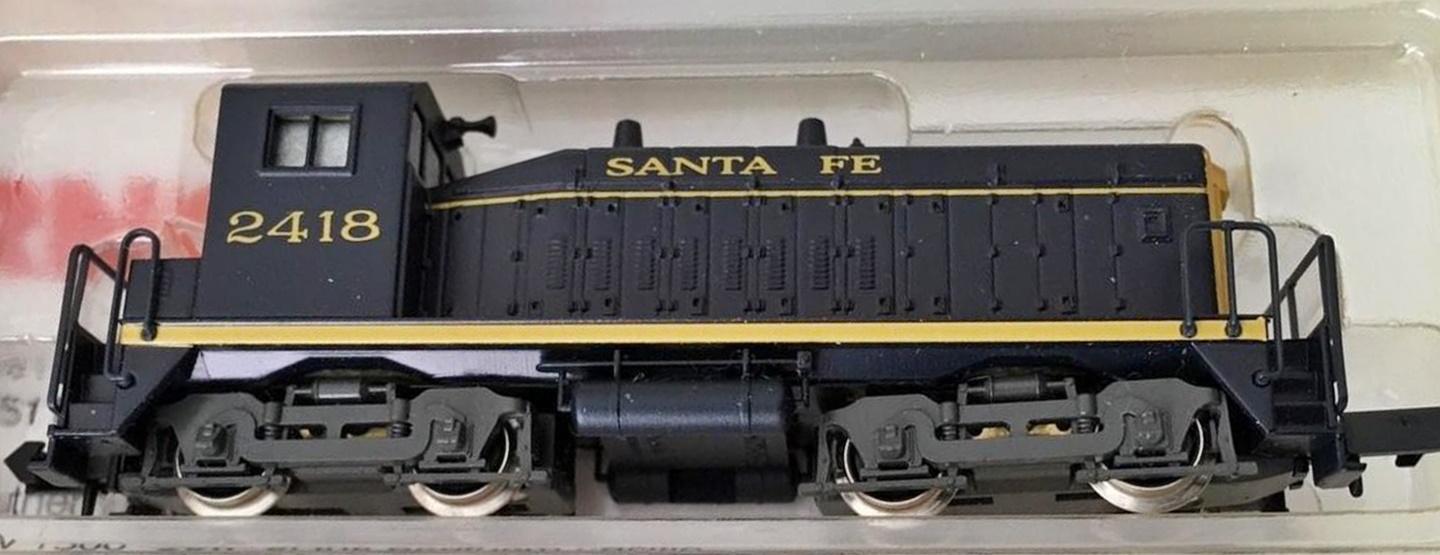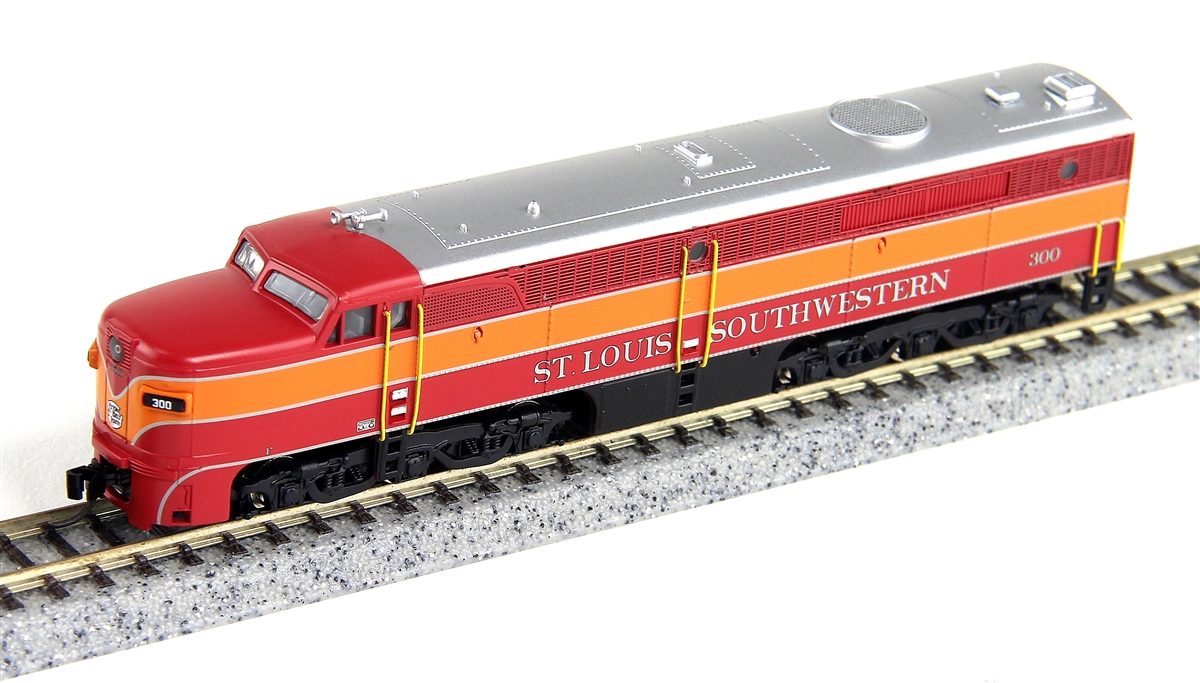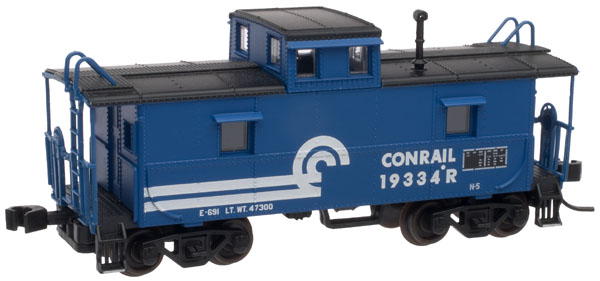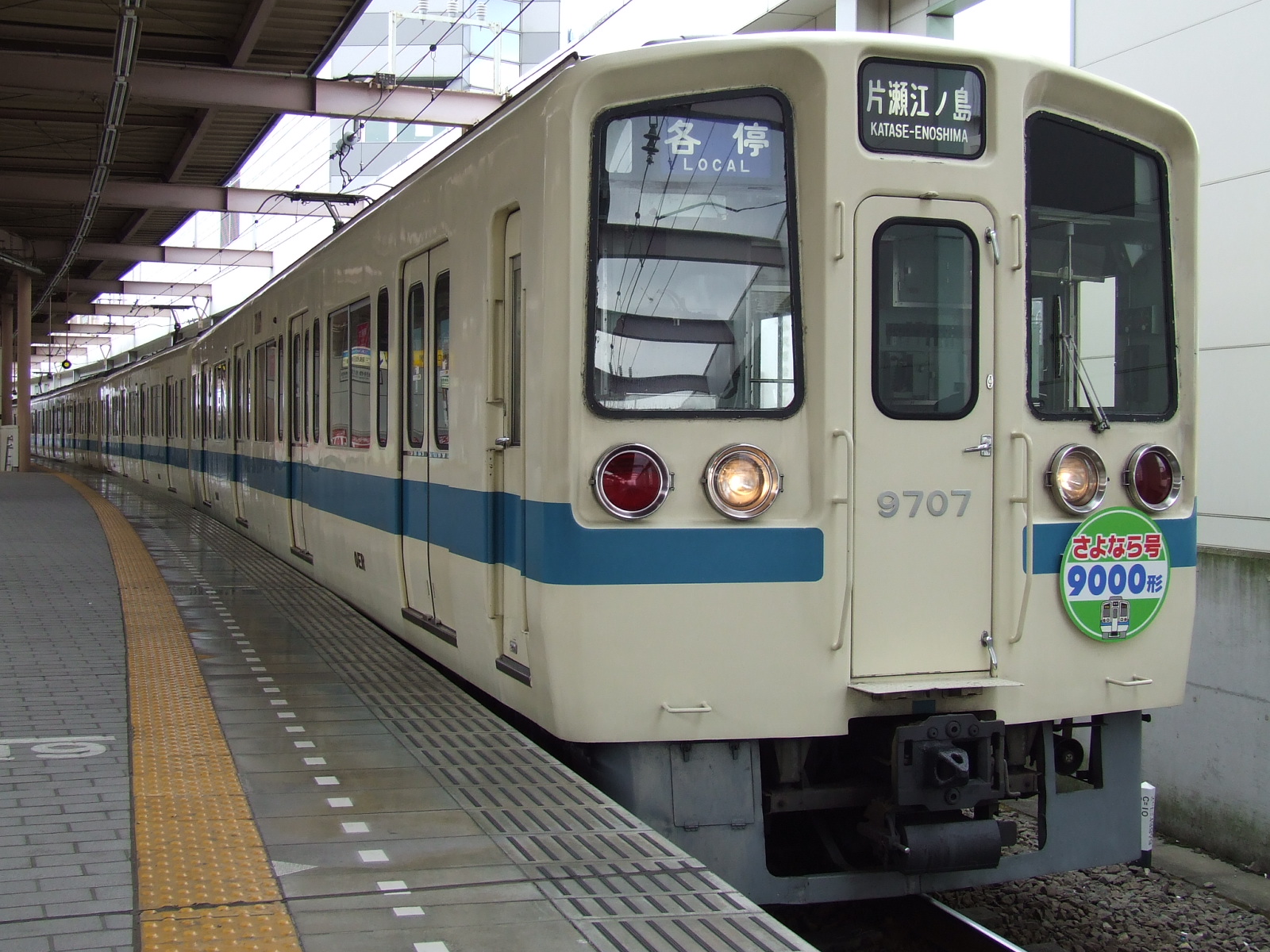Greenmax - 421-1 - Light Rail, Railcars - Odakyu Electric Railway
| Stock Number | 421-1 |
| Original Retail Price | 1,512¥ |
| Brand | Greenmax |
| Manufacturer | Greenmax |
| Body Style | Greenmax Box Set Light Rail |
| Prototype Vehicle | Passenger Train, Electric, Odakyu 9000 Series (Details) |
| Prototype | Light Rail, Railcars |
| Road or Company Name | Odakyu Electric Railway (Details) |
| Coupler Type | Other |
| Wheel Type | Nickel-Silver Plated Metal |
| Wheel Profile | Small Flange (Low Profile) |
| Multipack | Yes |
| Multipack Count | 4 |
| Ready-to-Run | No |
| Kit Complexity | Moderate Skills |
| Kit Material(s) | Polystyrene |
| Release Date | 2017-07-01 |
| Item Category | Passenger Trains |
| Model Type | Railcar |
| Model Subtype | Odakyu |
| Model Variety | Series 9000 |
| Prototype Region | Japan |
| Prototype Era | JP Stage 3: Post-war Recovery (1945–1987) |
| EAN/JAN/GTIN13 Number | 4946950900174 |
Specific Item Information:
Odakyu Type 9000 (8000) Additional Two Middle Car Set (Add-On 2-Car Unassembled Kit)
Prototype History:
In 1972, Odakyu Electric Railcars introduced the 9000 series EMU passenger train. This train was equipped with a number of new features such as the adoption of a one-step lowering window and field chopper control at the 20 m class ordinary steel with narrowed skirt. By 1977 nine car trains and nine car trains each were manufactured. These trains were retured from all service by May 2006, Dehaha 9001 is kept in the Kitami inspection area as a museum piece.
Road Name History:
Odakyu Electric Railway Co., Ltd. (小田急電鉄株式会社 Odakyū Dentetsu Kabushiki-gaisha), or OER, is a major railway company based in Tokyo, Japan, best known for its Romancecar series of limited express trains from Tokyo to Odawara, Enoshima, Tama New Town, and Hakone.
The Odakyu Electric Railway forms the core of the Odakyu Group, which comprises 101 companies (as of July 14, 2017) and includes the Enoshima Electric Railway, Hakone Tozan Railway, Odakyu Bus, Odakyu Department Store, and Hyatt Regency Tokyo hotel.
From Wikipedia
The Odakyu Electric Railway forms the core of the Odakyu Group, which comprises 101 companies (as of July 14, 2017) and includes the Enoshima Electric Railway, Hakone Tozan Railway, Odakyu Bus, Odakyu Department Store, and Hyatt Regency Tokyo hotel.
From Wikipedia
Brand/Importer Information:
Green Max may be little known, but they offer a large range of kits and a few 'ready-to-run' of Japanese railway models and more important a large range of accessories of typical Japanese design, all in Japanese N-scale (1:150)
Green Max kits are usually simple to build, but painting and finishing requires careful attention, the catalogue includes a full manual for assembly, painting and finishing, albeit only in Japanese, the many photographs make it clearly understandable. Most kits can be build in several varieties, the multiple-unit train models in particular, so you have the choice of several prototypes. This is why the bogies and pantographs (and the eventual power unit) are NOT included in the kits, they vary with the choice of prototype and would otherwise make the kits more expensive.
The Green Max rolling stock range is extensive and stands clearly out from the ranges by Kato and Tomix. Green Max makes mainly models of the 1950's and 1960's, many of an even earlier age and Green Max has a large range of trains used by the many private railways of Japan. As mentioned above it is often possible to choose from more than one model when assembling the kit. It is best to decide before you buy the kit, the catalogue gives you the information needed, only then you can order the right bogies and pantographs. Different front-ends and possibly sides are included in the kit.
Green Max kits are usually simple to build, but painting and finishing requires careful attention, the catalogue includes a full manual for assembly, painting and finishing, albeit only in Japanese, the many photographs make it clearly understandable. Most kits can be build in several varieties, the multiple-unit train models in particular, so you have the choice of several prototypes. This is why the bogies and pantographs (and the eventual power unit) are NOT included in the kits, they vary with the choice of prototype and would otherwise make the kits more expensive.
The Green Max rolling stock range is extensive and stands clearly out from the ranges by Kato and Tomix. Green Max makes mainly models of the 1950's and 1960's, many of an even earlier age and Green Max has a large range of trains used by the many private railways of Japan. As mentioned above it is often possible to choose from more than one model when assembling the kit. It is best to decide before you buy the kit, the catalogue gives you the information needed, only then you can order the right bogies and pantographs. Different front-ends and possibly sides are included in the kit.
Item created by: gdm
on 2018-09-27 11:34:32
If you see errors or missing data in this entry, please feel free to log in and edit it. Anyone with a Gmail account can log in instantly.
If you see errors or missing data in this entry, please feel free to log in and edit it. Anyone with a Gmail account can log in instantly.


